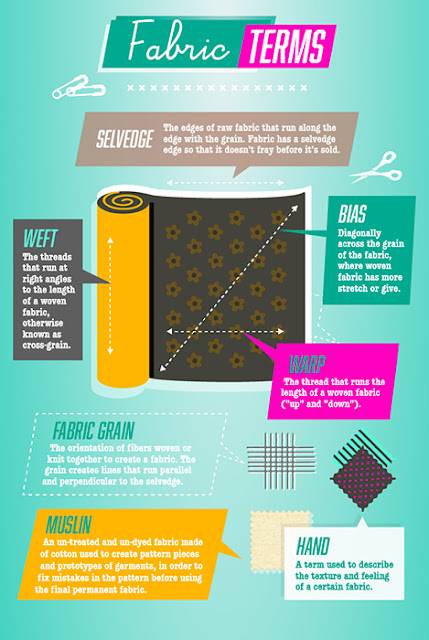Sewing Terms: Fabric Types
Fabric is an essential part of sewing – in fact, it’s your most basic material and the part of your project that you will most likely decide on first. Knowing the difference between warp and weft, how to find the grain, and when to use muslin will give you the step up that you need to go from beginner to pro sewist.
Fabric Grain: The orientation of fibers, woven or knit together, to create a fabric. The grain creates lines that run parallel and perpendicular to the selvedge.
Bias: Diagonally across the grain of the fabric, where woven fabric has more stretch or give.
Warp: The thread that runs the length of a woven fabric (“up” and “down”).
Weft: The threads that run at right angles to the length of a woven fabric, otherwise known as cross-grain.
Muslin: an untreated, undyed fabric made of cotton, used to create pattern pieces and prototypes of garments, in order to fix mistakes in the pattern before using the final permanent fabric.
Selvedge: The edges of a raw fabric that run along the edge with the grain. Fabric has a selvedge edge so that it doesn’t fray before it’s sold.
Hand: A term used to describe the texture and feeling of a certain fabric.

Cood!
ВідповістиВидалити